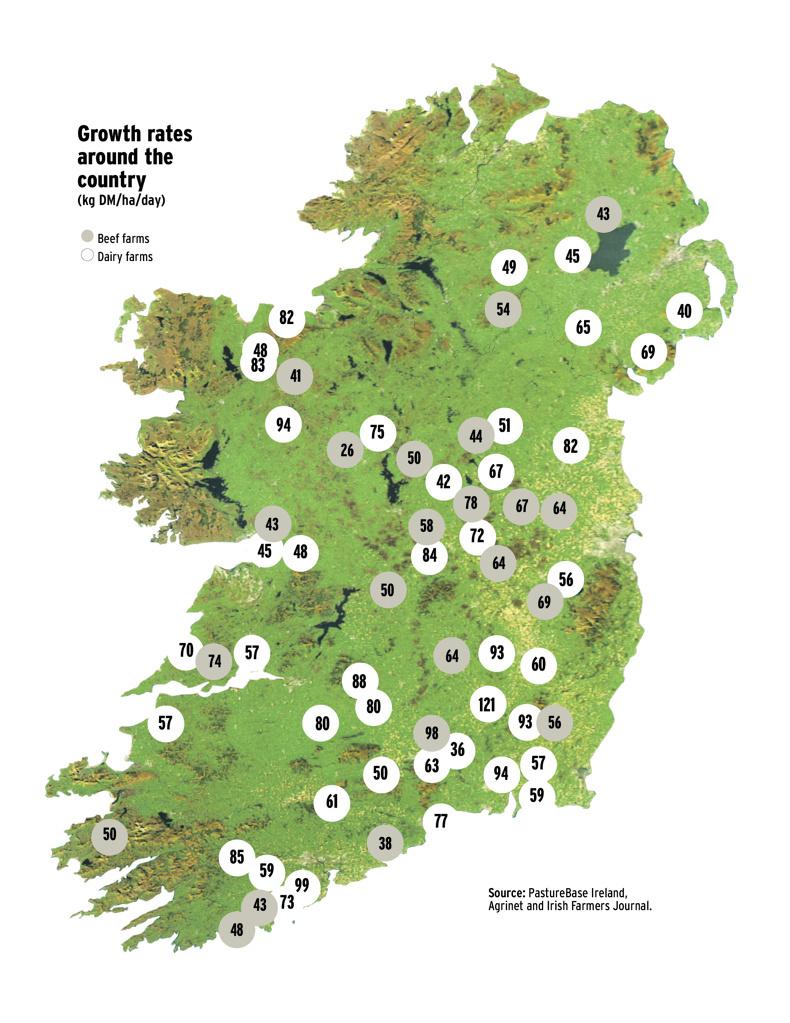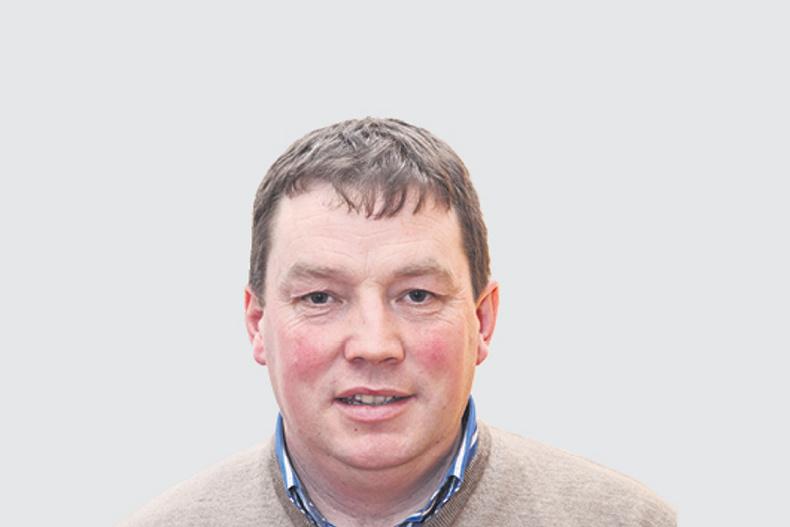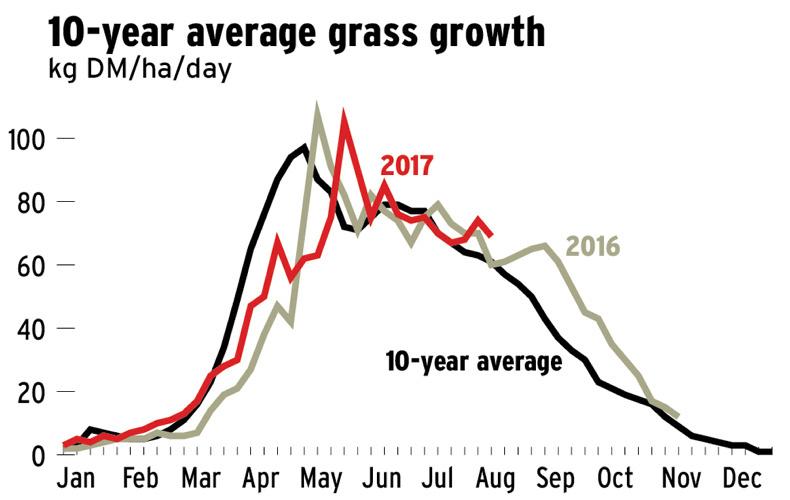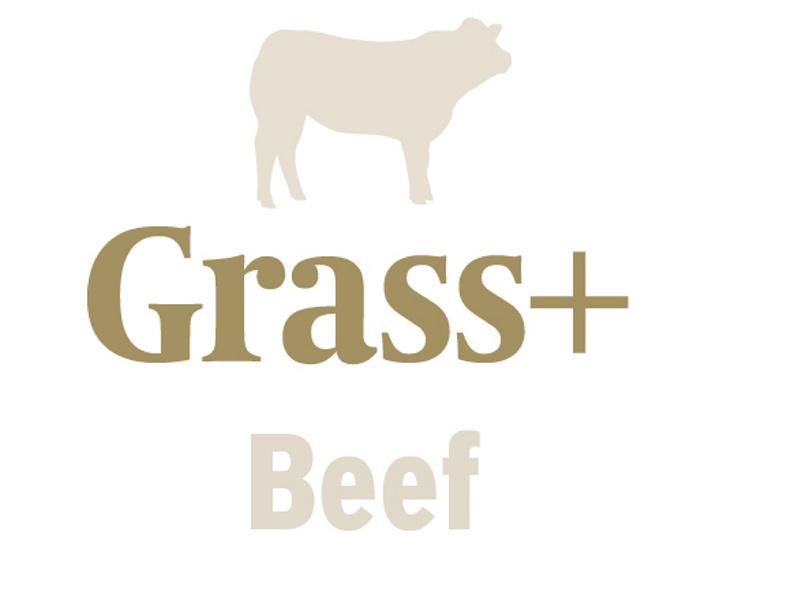As expected, wet weather and the noticeable drop in temperature in recent days has led to a growth rate reduction of 10% to 12% compared with last week. Growth is now running at an average of 56kg DM/ha/day nationally. As always, there is a lot of variation around this number, with our highest growth figure of 98kg DM/ha recorded in Tipperary and the lowest of 26kg DM/ha taken in Roscommon.
However, these figures will have been affected by management on individual farms and don’t necessarily represent prevailing rates for the area.
Now our focus should be on building grass. This means getting any remaining silage cuts done as quickly as possible and parking up the mower for the year, going into slightly heavier covers than normal, getting fertiliser out and considering selling or housing some animals for finishing. Only consider reseeding from here on in if stocking rates are low.
On a farm stocked at 2LU/ha, there should be 18 grazing days ahead of cattle at this point. This translates into an average farm cover of 650kg DM/ha. At 2.5 LU, this figure rises to 810kg DM/ha. By mid-September, we should be targeting 25-30 days’ worth of grass on our farms – 975kg DM/ha on the 2LU/ha farm and 1,200kg DM/ha at 2.5LU/ha. Grass will not be as inclined to head out from here on in and growth will likely slow week on week, so it is OK to carry slightly more than these targets and to front-load the increase in supply if possible.
While heavy rain and cooler temperatures are making utilisation difficult, keep cattle moving. Some of our BETTER farmers are working in 12-hour allocations to make the best of the wet conditions.
Tetany
As calves get strong and grass dry matter reduces, we are also moving into prime tetany conditions.
If grass is very leafy and the forecast is bad, consider moving cattle on early, ideally to paddocks with relatively strong grass and shelter. Bales of straw, hay or stemmy silage will also help. Obviously there should be magnesium sources in fields such as buckets or water-borne minerals.


Co Limerick
System suckler to weanling
Soil type variable
Avg farm cover (kg DM/ha) 1,028
Grass demand (kg DM/ha/day) 23
Growth (kg DM/ha/day) n/a
I have made 430 bales of silage this year so far and probably have another 60-70 to make. All silage made this year is of extremely high quality as I took out paddocks as they became too strong to graze rather than focusing on bulk.
I plan to spread around 23 units of nitrogen in the form of urea per acre on high index P&K land over the next few weeks and 1.5 bags of 18-6-12 per acre on low-index land to build autumn grass. I am not worried about quality diminishing too much due to heavy covers from this time of year and I have a herd of suckler cows that can be used to clean out paddocks after young stock if covers are heavy in late autumn.
I plan to shorten my winter to 3.5 months for the bulk of my stock. I will do this by having an autumn rotation planner in place and closing 60% of my land by early November to have enough grass for the spring.

Co Galway
System suckler to store
Soil type free-draining loam
Average farm cover (kg DM/ha) 870
Grass demand (kg DM/ha/day) 12
Growth (kg DM/ha/day) 43
The weather has been unsettled here in the west over the past week and while ground isn’t cutting up just yet it wouldn’t take much rain for poaching to occur. My demand has reduced to almost nothing on the home block as more silage ground away from the house has come back into the rotation.
The cows and calves are away on this and it’ll give me a much needed chance to build grass for the autumn. I went with a half bag of urea/acre two weeks ago and whilst growth hasn’t rocketed, everywhere is greening up nicely. I plan on going with a bag of Super P/acre on the main block as the P index is low.
I slaughtered the 2016 bull calves recently and I was pleased with how they got on. On average, they killed out at 360kg and all had adequate covers of flesh. It was my first time going down the bull route and I’ll have it down to a fine art for next year.

Derrypatrick Herd
System suckler to beef
Soil type mixed
Average farm cover (kg DM/ha) 700
Grass demand (kg DM/ha/day) 41
Growth (kg DM/ha/day) 60
Following a growth of 80kg DM/ha the week beginning 31 July, 25 acres was removed as surplus last week to maintain quality grass for grazing. The whole farm is now available for grazing resulting in a moderate herd demand of 41kg DM/ha. Our focus immediately changes to building our grass supply and increasing rotation length. The challenge now is to maximise grass consumed while grazing heavier covers and limit/prevent ground damage as grazing conditions begin to deteriorate.
Steers and heifers were weighed last week at 17 months and are on average, 595kg and 515kg, respectively. Average daily gain since turnout in mid-March is 1.2kg/day for steers and 0.9kg/day for heifers. Heifers should meet the criteria for a 20 month slaughter while the steers may be slightly older. We aim to have both groups slaughtered prior to their second winter. Supplementation has not commenced and will depend on grass quality/supply and weather conditions.

Co Westmeath
System suckler to beef
Soil type mostly heavy
Avg farm cover (kg DM/ha) 1,100
Grass demand (kg DM/ha/day) 33
Growth (kg DM/ha/day) 78
Grass growth has picked up in recent weeks and as a result grass is in reasonably good supply on the farm at present. All of the second-cut silage was completed in the last few weeks and I also took out a few paddocks that were getting strong. The silage ground will be welcomed back into the grazing platform as I start to build covers toward the back end of the year. To further build covers, the entire farm got around 20 units of nitrogen last week. The stock bulls were taken out last week and I hope to scan shortly to see how the breeding season went.
I started to feed a few of the cows that I have identified for culling as I hope to slaughter them before housing. With the weather conditions deteriorating over the last few weeks, I decided to house all spring-born bulls for finishing.
They are currently on good-quality silage and 4kg of ration and they will be built up to ad-lib over the coming weeks.







 This is a subscriber-only article
This is a subscriber-only article
















SHARING OPTIONS: